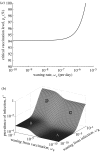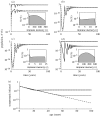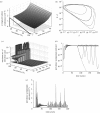Implications of vaccination and waning immunity
- PMID: 19324753
- PMCID: PMC2677258
- DOI: 10.1098/rspb.2009.0057
Implications of vaccination and waning immunity
Abstract
For infectious diseases where immunization can offer lifelong protection, a variety of simple models can be used to explain the utility of vaccination as a control method. However, for many diseases, immunity wanes over time and is subsequently enhanced (boosted) by asymptomatic encounters with the infection. The study of this type of epidemiological process requires a model formulation that can capture both the within-host dynamics of the pathogen and immune system as well as the associated population-level transmission dynamics. Here, we parametrize such a model for measles and show how vaccination can have a range of unexpected consequences as it reduces the natural boosting of immunity as well as reducing the number of naive susceptibles. In particular, we show that moderate waning times (40-80 years) and high levels of vaccination (greater than 70%) can induce large-scale oscillations with substantial numbers of symptomatic cases being generated at the peak. In addition, we predict that, after a long disease-free period, the introduction of infection will lead to far larger epidemics than that predicted by standard models. These results have clear implications for the long-term success of any vaccination campaign and highlight the need for a sound understanding of the immunological mechanisms of immunity and vaccination.
Figures




References
-
- Alizon S., Van Baalen M. Emergence of a convex trade-off between transmission and virulence. Am. Nat. 2005;165:E155–E167. doi:10.1086/430053 - DOI - PubMed
-
- Anderson R.M., May R.M. Oxford University Press; Oxford, UK: 1992. Infectious diseases of humans.
-
- Andre´ J.B., Ferdy J.B., Godelle B. Within-host parasite dynamics, emerging trade-off, and evolution of virulence with immune system. Evolution. 2003;57:1489–1497. doi:10.1554/02-667 - DOI - PubMed
-
- Antia R., Levin B.R., May R.M. Within-host population dynamics and the evolution and maintenance of microparasite virulence. Am. Nat. 1994;144:457–472. doi:10.1086/285686 - DOI
-
- Baccam P., Beauchemin C., Macken C.A., Hayden F.G., Perelson A.S. Kinetics of influenza A virus infection in humans. J. Virol. 2006;80:7590–7599. doi:10.1128/JVI.01623-05 - DOI - PMC - PubMed
Publication types
MeSH terms
LinkOut - more resources
Full Text Sources
Medical

